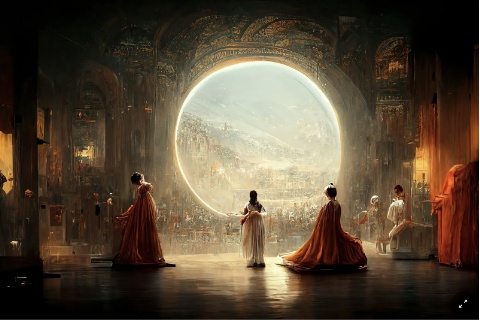Quote of the Day
”Here we have a saying: a good friend is someone who visits you when you are in prison. But a really good friend is someone who comes to hear your lectures.”
- Malcolm Bradbury
Hmmm… One day, many years ago, I gave a keynote talk to a large audience (300 or so). It went well, I thought — good questions, lots of applause at the end, etc. Smugly, I gathered my papers and headed for the exit when I noticed one of my academic colleagues who had been sitting — unnoticed by me — at the back. “Very good lecture”, he said. “Just the right number of half-truths.”
Out of the mouths of babes and academics…
Musical alternative to the morning’s radio news
Joachim Cooder | When The Train Comes Along
New to me, but striking.
Long Read of the Day
Martin Rees on the future, existential risks and a good many other things besides
Martin Rees (Whom God Preserve) published another book this year — If Science is to Save Us — and John Mecklin, Editor-in-Chief of The Bulletin of the Atomic Scientists interviewed him about it and a number of related topics. I found the transcript of the interview fascinating, and hope you do too.
Here’s how it begins…
Martin Rees: Can I just say, at the start, that my book is not very homogeneous; the first half is concerned with big global issues, and the second half is the more personal perspective of a scientist, and interaction with the scientific community, with the public, with the government and politicians, etc. So the book’s really in two halves, and those who don’t like it say it is a dog’s breakfast; those who like it more will say it’s a smorgasbord.
John Mecklin: I enjoyed both parts of it. But could you quickly for our readers summarize the part at the beginning that is less personal: What was the main point you were trying to make with If Science is to Save Us?
Rees: I was making the point that more and more of the issues which concern us or determine our future have a scientific dimension…
Reflections on Generative ‘AI’: #2
(A thoughtstream on a current obsession.)
The last couple of years have seen an explosion of new ‘tools built on machine-learning technology which the tech industry brands as “AI” (i.e. artificial intelligence) in an attempt to give them a veneer of respectability. After all, “Machine-learning” isn’t exactly a sexy term. While these tools are certainly artificial, they are only ‘intelligent’ in an extremely limited, focussed sense.
The tools that have mainly captured public and media attention recently are so-called ‘generative’ ones because they are able to create artefacts (graphical objects and written compositions) that humans also create (or aspire to create).
This note is about the graphical tools like DALL-E, Midjourney and Stable Diffusion. (If you’re puzzled about the names, then join the club, but I’m sure that are rationales for them somewhere.)
Public interest has been ignited by the images that these tools can create in response to a verbal prompt from a user. For example: “Draw a picture of J.K. Rowling as an astronaut.” The results are often amusing, unexpected and/or dramatic.
Recently, one of these images — labelled Théâtre D’opéra Spatial — won first prize in Colorado State Fair’s annual art competition.
It’s a very striking work and was created by a games-maker, James Allen, using Midjourney, one of the ‘generative’ tools. Mr Allen’s Blue Riband sparked a controversy among artists and others which left him unmoved. Their anger should be directed at the companies that make the tools, he said, not at people like him who merely use them. And he topped it off with an incendiary closing line: “Art is dead, dude”, he said to the New York Times, “It’s over. A.I. won. Humans lost.”
This rings a bell, does it not, for anyone interested in the history of media? It brings to mind the moment in 1839 when the French painter Paul Delaroche saw a daguerreotype (an early type of photograph) for the first time and promptly declared, “From today, painting is dead!”
With the 20/20 vision of hindsight, we know that Delaroche was wrong. He had fallen into the trap that the great cultural critic Neil Postman identified many decades ago — believing that new media technology is additive (or subtractive) when in fact its main impact is ecological. A new communications technology doesn’t wipe out its predecessors. The Internet didn’t kill broadcast TV, for example, but it certainly changed the media ecosystem in which broadcast media have to operate.
Or, as L.M. Sacasas puts it,
Powerful new tools can restructure the complex techno-social ecosystem we call art in sometimes striking and often unpredictable ways. Even if we don’t think a new tool “kills” art, we should be curious about how it might transform art, or at least some of the skills and practices we have called art.”
Of course, in one limited sense Delaroche was right: photography undoubtedly had a dramatic impact on some kinds of painting — ‘realism’ — and photography made that particular activity more or less pointless in a few years.
But, as another critic, Federico Alegria put it,
painting was not going to surrender, and that’s when many of the now known “isms” (abstractionism, cubism, futurism, constructivism, dadaism, and TOO MANY others) became alive. And that’s one of the great beauties of this tragicomedy, photography took a lot from painting, but by doing that, painting was capable of truly reinventing itself from scratch.
Besides, Delaroche’s hyperbolic prediction rather overlooked the extent to which, for centuries, painters had been using photographic ideas to help them in their work. Years ago, David Hockney wrote a terrific book — Secret Knowledge – Rediscovering the lost techniques of the Old Masters in which he demonstrated how Renaissance artists used mirrors and lenses to develop perspective and chiaroscuro. And, in another remarkable book, my former colleague, Phil Steadman, explored Jan Vermeer’s possible knowledge of 17th-century optical science, and outlined the history of the camera obscura which projected an accurate image for artists to trace. The clincher for me was Phil’s meticulous reconstruction of Vermeer’s studio, complete with a camera obscura, which provided intriguing evidence for his conjecture that Vermeer did indeed use the device.
The moral is one that is generally lost on the tech industry. Because its practitioners know no history, they invariably think that everything they come up with is de novo. Sometimes, perhaps, it is. But the lesson from history is that however disruptive something novel appears to be, humans will find a way of using it, often in ways that its inventors never envisaged. The street finds its own use for things.
Part of an ongoing series…
My commonplace booklet
My friend Quentin had an interesting post on his blog yesterday. He had come on this juxtaposition and wondered if it was a spoof, so he investigated — and it wasn’t.
The whole post is worth reading.
This Blog is also available as a daily email. If you think that might suit you better, why not subscribe? One email a day, Monday through Friday, delivered to your inbox. It’s free, and you can always unsubscribe if you conclude your inbox is full enough already!


